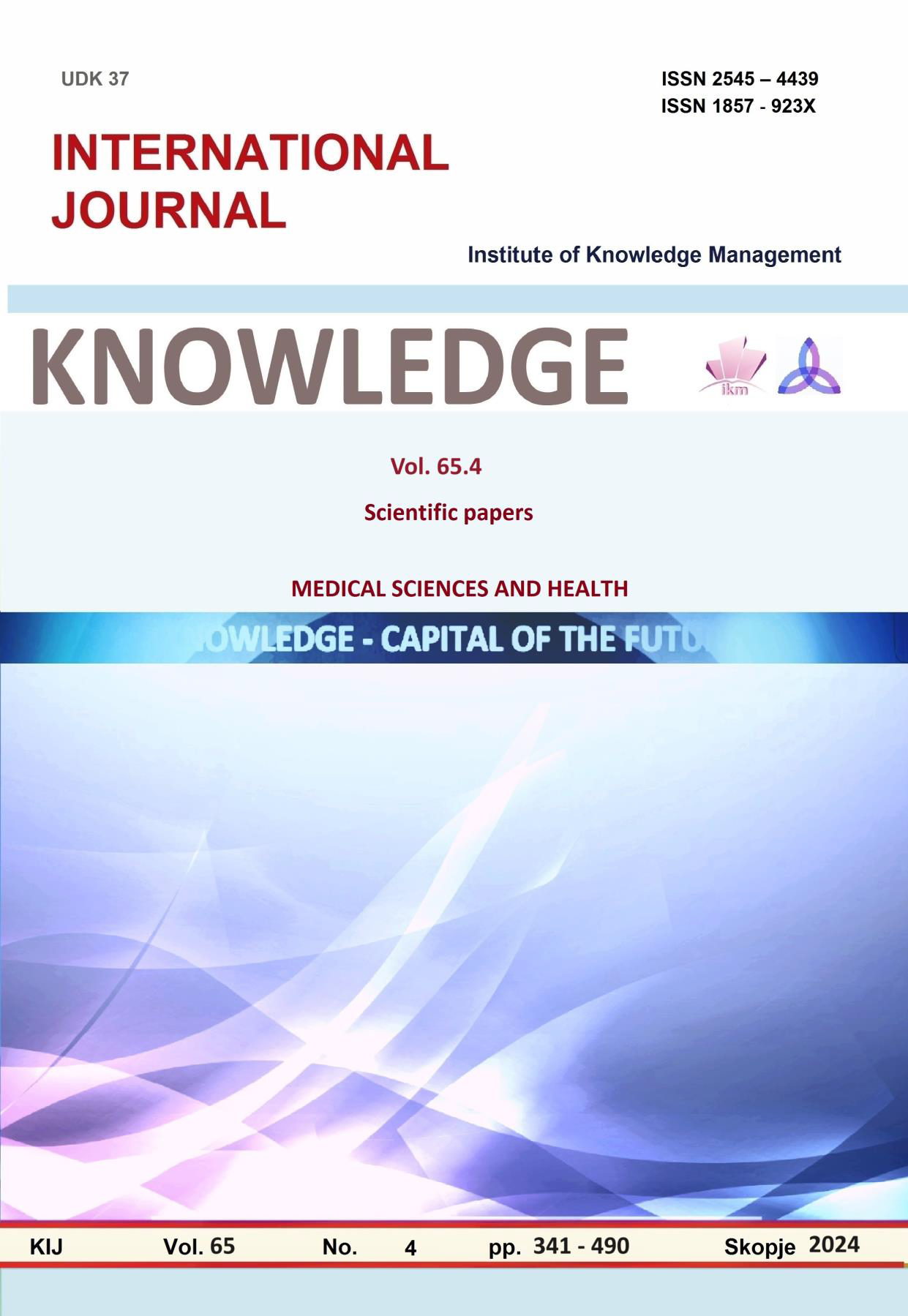INFLUENCE OF EMPLOYMENT STATUS ON THE APPEARANCE OF DEPRESSION SYMPTOMS IN WOMEN
Keywords:
depression, working status, female genderAbstract
Today, depression is much more than an ordinary disease and is not only a problem for the individual, but for society in general. Depression is associated with stressful living conditions. As the female population nowadays is highly exposed to a large number of stressogenic factors in the work and living environment, depression represents a serious danger for women.
Objectives: to determine the frequency of symptoms of depressive disorder in working women who are employed, to determine the frequency of symptoms of depressive disorder in women who are not employed.
Methods: The research was a population-prospective, analytical-descriptive cross-sectional study, based on the analysis of the degree of influence of social-economic and environmental factors, more precisely the employment status on the appearance of depression symptoms in a predetermined observation area, including the female population of the population at the level of the municipality of Bihać. A total of N=200 women between the ages of 18 and 55 were included in the survey. The respondents were divided into two groups, one group consisted of employed women total N=100 and the second group consisted of unemployed women total N=100. The research did not include women who had previously been diagnosed with depression. To determine the occurrence of symptoms of depression, we used the Hopkins Symptom Checklist (HSCL-25), it contains 25 statements, the first part contains 10 statements related to symptoms of anxiety, the second part contains 15 statements related to symptoms of depression, the second subscale was used in this research of this scale that refers to symptoms of depression. Each respondent voluntarily filled out the survey questionnaire, and during the survey, time was taken into account and the respondents' anonymity was guaranteed. The statistical program IBM SPSS Statistics 27 was used for data processing.
Results: It was determined that the feeling of hopelessness is statistically the most significant symptom in both employed and unemployed respondents, and factor analysis also determined a statistically significant difference in depression symptoms in employed and unemployed respondents, which is shown in the tables of this paper.
Conclusion: Taking into account the results of the research, it can be said that work status can have an impact on the appearance of depression symptoms in women, also the fact that statistically significant symptoms in employed respondents are different compared to statistically significant symptoms in unemployed respondents further confirms that work status can have an impact on the appearance of depression symptoms.
References
Cai, Y., Kong, W., Lian, Y., & Jin, X. (2021). Depressive symptoms among Chinese informal employees in the digital era. International Journal of Environmental Research and Public Health, 18(10), 5211. https://doi.org/10.3390/ijerph18105211 Dudek, K. A., Dion-Albert, L., Kaufmann, F. N., Tuck, E., Lebel, M., & Menard, C. (2021). Neurobiology of resilience in depression: immune and vascular insights from human and animal studies. The European journal of neuroscience, 53(1), 183–221. https://doi.org/10.1111/ejn.14547 Figueroa-Hall, L. K., Paulus, M. P., & Savitz, J. (2020). Toll-Like Receptor Signaling in Depression. Psychoneuroendocrinology, 121, 104843. https://doi.org/10.1016/j.psyneuen.2020.104843
Molarius, A., & Metsini, A. (2021). Domestic Work, Self-Reported Diagnosed Depression and Related Costs among Women and Men-Results from a Population-Based Study in Sweden. International journal of environmental research and public health, 18(18), 9778. https://doi.org/10.3390/ijerph18189778 Niedhammer, I., Coindre, K., Memmi, S., Bertrais, S., & Chastang, J. F. (2020). Working conditions and depression in the French national working population: Results from the SUMER study. Journal of psychiatric research, 123, 178–186. https://doi.org/10.1016/j.jpsychires.2020.01.003 Oh, J. W., Park, J. Y., & Lee, S. (2022). Association between employment stability and depression as moderated by gender among South Korean employees. Journal of affective disorders, 298(Pt A), 308–315. https://doi.org/10.1016/j.jad.2021.11.009 Shen, Z., Fang, X., & Zheng, X. (2022). The impact of women's off-farm employment on depressive symptoms: Evidence from rural China. Social science & medicine (1982), 311, 115309. https://doi.org/10.1016/j.socscimed.2022.115309 Soares, C. N., & Shea, A. K. (2021). The Midlife Transition, Depression, and Its Clinical Management. Obstetrics and gynecology clinics of North America, 48(1), 215–229. https://doi.org/10.1016/j.ogc.2020.11.009 Yılmaz, E., Uyar, E., Yıldız, F., & Dereboy, F. (2023). Systematic Review and Meta-analysis of Depressive Symptom Severity of Employed and Unemployed Women in Turkey. Noro psikiyatri arsivi, 60(2), 178– 184. https://doi.org/10.29399/npa.28170 Żołnierczyk-Zreda D. (2023). Zaburzenia depresyjne pracujących Polaków w okresie pandemii COVID-19 (lata 2019–2022) [Depressive disorders of working Poles during the COVID-19 pandemic (2019- 2022)]. Medycyna pracy, 74(1), 41–51. https://doi.org/10.13075/mp.5893.01317





